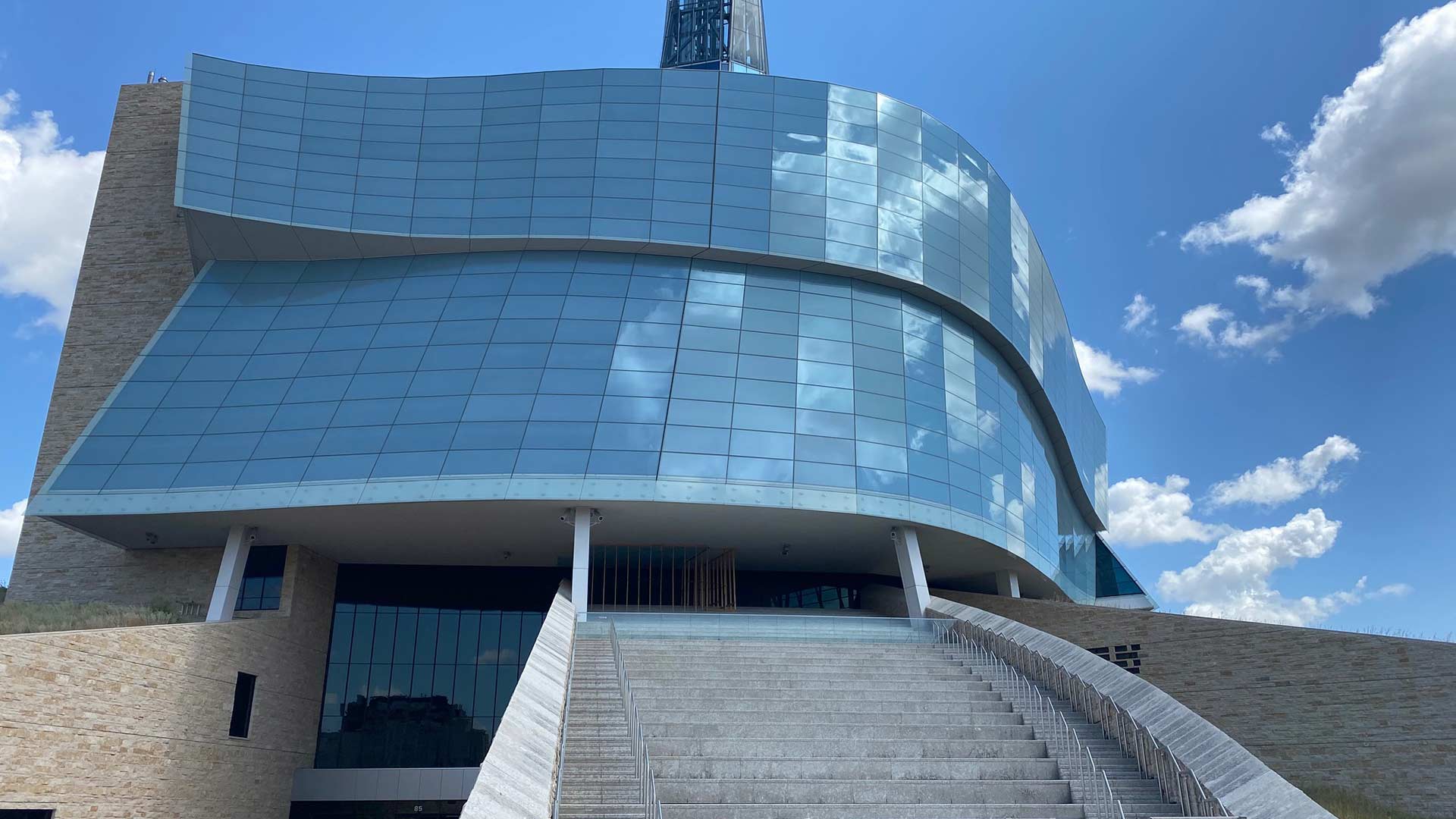A damning review into the workplace culture at the Canadian Museum for Human Rights (CMHR) in Winnipeg has determined that “racism is pervasive and systemic within the institution,” after several former and current employees took to social media with allegations of racism, sexism and homophobia.
Pauline Rafferty, the museum’s interim CEO and board chair, accepted the reviews findings, which were released Wednesday, and apologized to staff.
“It’s saddening, it’s troubling and it’s upsetting,” said Rafferty. “I really believe [the report] identified the issues and gives us a huge opportunity now in a transparent way to make the changes that we need to make.”
In June, an Instagram account called CMHR Stop Lying was created after the museum made a post supporting the Black Lives Movement following the death of George Floyd in Minnesota.
Many alluded to hypocrisy on the museum’s part when its own employees experienced acts of systemic racism.
The museum called for an external review shortly after.
Winnipeg lawyer Laurelle Harris was in charge of it. She interviewed 25 current and former employees.
“There are folks who have had some difficult experiences,” said Harris.
The review found Black, Indigenous and People of Colour (BIPOC) were often passed over for promotion in favour of “equally or less qualified” white candidates, as well as complaints of racism from BIPOC employees were often overlooked by higher management.

The report outlines instances where Indigenous program interpreters left their positions because of anti-Indigenous racism they experienced while working. One program interpreter described, “being laughed at by visitors while singing a traditional song on the hand drum. Another visitor asked for the program interpreter’s name so that she could ‘pray’ for her.”
Employees who were subject to this behaviour were often told not to report this because they could be seen as “difficult,” according to the report, and if employees chose to report their concerns were rebuffed.
The investigation also found visible minorities, Indigenous person and people living with disabilities were underrepresented, especially within management at the museum.
“Systemic racism is a real thing in Canada. It permeates all of our institutions and the work of undoing racism requires policy change. It requires changes in practice but it also requires introspection on the part of individual Canadians,” said Harris.
Harris noted during a visit to the museum that Black Canadian content was, “vastly underrepresented.” Harris explains this creates the impression that historic treatment of Black people in Canada is not on-going or prevalent when in fact Black people in the country, “continue to suffer from the effects of racist practices and policies.”
The report also highlights the museum’s decision to omit exhibits containing LGBTQ content seven times from 2015 to 2017 at the request of some religious schools. One former program interpreter who identifies as LGBTQ2+ spoke of being upset that content was excluded as they would have appreciated seeing something similar as a child.
Prior to the release of the report the museum’s board of trustees created a new diversity and inclusion committee. They are working to implement some of the recommendations immediately.
The report outlines 44 recommendations to address the findings including; the diversity and inclusion committee require not fewer than one Black person, one Indigenous person and one person who identifies as LGTBQ2+ at all times, in addition to members of additional equity groups.
All board policies approved to date and future board policies will undergo a thorough analysis to screen for bias, and to ensure that board policies promote, and support equity, all members of the Board of Trustees engage in ongoing anti-racist and anti-oppression education, both by way of self-learning and through scheduled training sessions.
The board of trustees require the CEO to engage in meaningful community relations with Black, Indigenous and LGBTQ+ communities, and to ensure meaningful community relations with transgender/gender diverse and Two-Spirit communities in particular.
“We need to do the hard work to make sure that our policies, our practices, our processes…are looked at and make changes necessary to bring in a diverse workforce,” said Rafferty.
Read More:
External review into systemic racism and oppression at the Canadian Museum for Human Rights
She added the museum has allocated $250,000 to put toward anti-racism, sexual harassment and cultural training.
The report also makes three recommendations for the federal government including the appointment of a person from the BIPOC community as the new CEO.
In a statement Heritage Minister Steven Guilbeault wrote, “organizations, including governmental agencies, must now turn words into action. To that end, we are also looking into the report’s recommendations to the government and will have more to say once we have appointed a new CEO.”
The museum’s former CEO John Young resigned in June but prior to this he posted a statement to the museum’s Facebook page acknowledging the museum has work to do to address systemic racism. However, Harris wrote the responses from a later interview with Young were inconsistent with the message.
“At no point during the discussion did the former C.E.O. express any appreciation of the gravity of the concerns raised with respect to racism. He did not acknowledge the validity of any of the claims and accepted no personal responsibility for the environment at the Museum which harmed his employees. He did not express any remorse,” wrote Harris.
A second phase of the review will be released at a later date.









